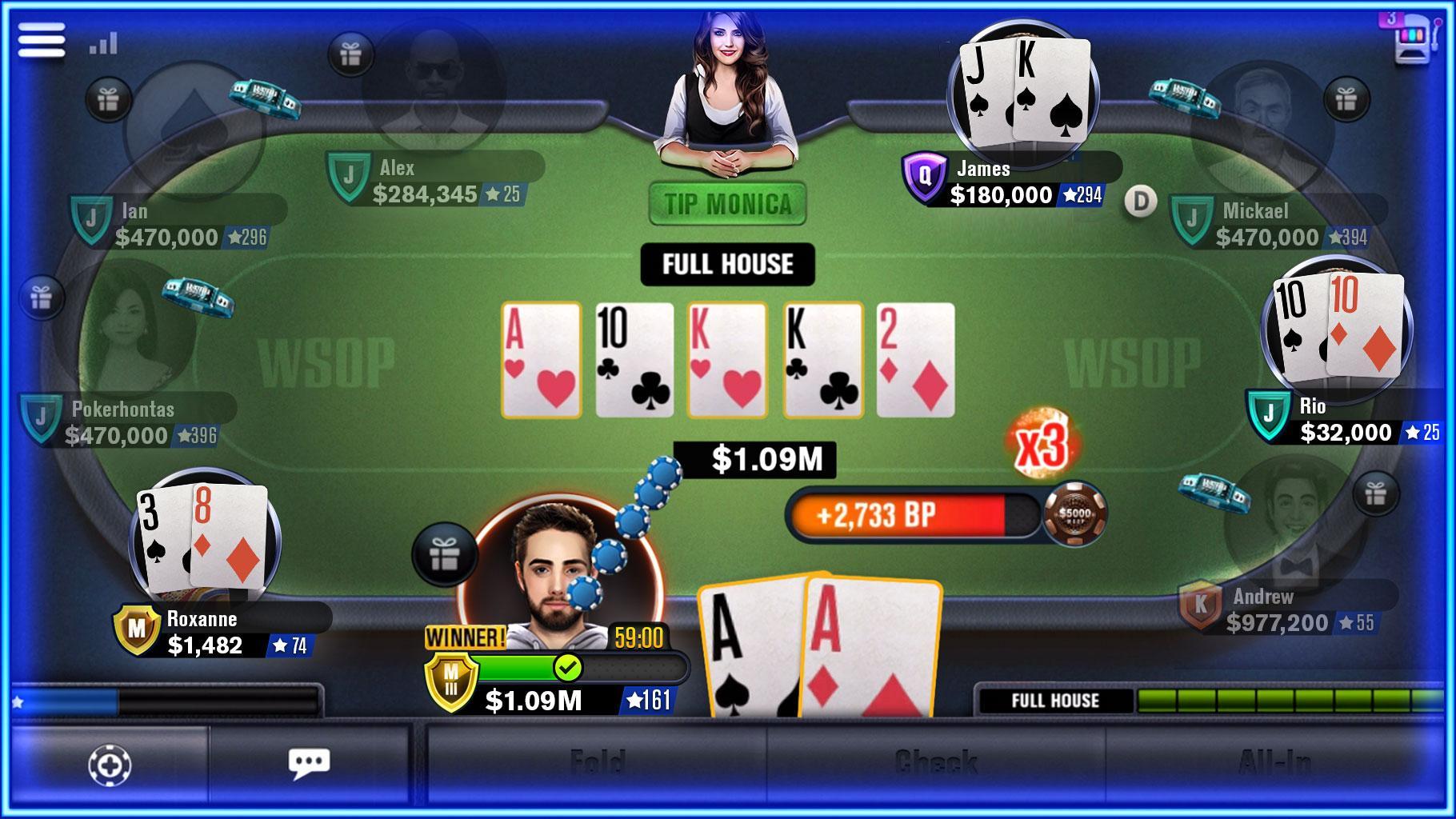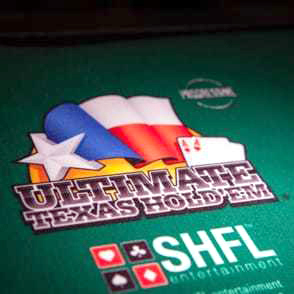Ultimate Texas Hold
Casinos are always looking for new games to offer bored gamblers. Over the last decade or 2, these games are more commonly related to poker than anything else. But games like these—including Scientific Gaming’s Ultimate Texas Holdem—are more akin to blackjack than to poker. In fact, dealing Ultimate Texas Holdem is considered dealing a novelty casino game. The College of Southern Nevada covers how to deal Ultimate Texas Holdem in their blackjack class.
- Ultimate Texas Holdem House Edge
- Ultimate Texas Hold'em Wizard Of Odds
- Ultimate Texas Holdem Table Layout
What’s the big difference between Ultimate Texas Holdem (and games like it) and “real” poker games? The main difference is who you’re competing with. In a so-called real poker game, you’re competing with the other players at the table. If you win money, you’re winning it from them. If you lose money, you’re losing it to your competitors at the table.
Ultimate Texas Hold'em - House Edge As far as casino table games go, Ultimate Texas Hold'em has a fairly low house edge. Taken separately your ante and blinds bets lose about 2.2% of the time. Together, they drop down to about 1%. Ultimate Texas Hold ’Em features heads-up play against the dealer and an optional bonus bet. This game gives players several advantages: The earlier you bet, the more you can bet. You don’t have to fold until you see all the community cards. The trips bonus pays odds if your final five-card hand is a three-of-a-kind or better. Getting Started.
- Ultimate Texas Hold'em is a variation of the game Texas Hold'em in which you play against a casino dealer. The game is available at casinos using Chartwell software, as well as many land based casinos. The game's low expected loss per unit wagered makes it a useful alternative for clearing bonuses.
- About Ultimate Texas Hold’em Invented by Roger Snow of Shuffle Master, Ultimate Texas Hold’em is a poker-based casino game wherein the player plays only against the dealer with the freedom to make one raise at any point during the course of the hand. It is important to note that when the raise is made earlier, its value is higher.
This isn’t a value judgment. It’s perfectly all right to play house-banked casino games. Gamblers do it every day. I’m pointing out the distinction because it’s important to know what you’re getting into when you play a casino game.
With that as a premise—understanding in detail what you’re getting into when you’re playing a casino game—I offer you this post: “The Definitive Guide to Ultimate Texas Holdem.” The idea is to share everything you would ever need or want to know about Ultimate Texas Holdem. Luckily, it’s not that complicated a game. There’s no need to write an entire book about it, like you would do with blackjack or poker.
Ultimate Texas Holdem is a card game where you play heads-up against a casino dealer. Other players at the table are also playing heads-up against the dealer. It features a progressive jackpot, among other payouts.
You start by making 2 equal-sized bets:
- The Ante Bet
- The Blind Bet
At most casinos, the minimum bet is either $5 or $10. The maximum bet is usually between $50 an $500.
You also have 2 optional bets you can make:
- The Trips Bonus Bet
- The Progressive Bet
You start by getting 2 hole cards from the dealer—these are 2 cards that are dealt to you face-down, just like in regular Texas holdem.
When you get those cards, you can choose from the following actions:
- Check
- Bet 3X the Ante (A “Play” Bet.)
- Bet 4X the Ante (Also a “Play” Bet.)
After you’ve made your decision, the dealer reveals 3 face-up cards—the “flop.” (This is also how regular Texas holdem works.)
If you checked when you got your hole cards, you have the option now to place a bet of 2X the Ante (another example of a “Play Bet.”) After that decision is made, the dealer turns over 2 more face-up cards—the turn and the river, in Texas holdem terms. Note that the action here is different than in traditional Texas holdem. Normally you’d have a turn, followed by a betting round, then the river, followed by another betting round.
Once you’ve made your decision, the dealer reveals her hole cards and announces the final hand. If your hand beats the dealer’s hand (using the standard poker hand rankings), you win even money on your Ante bets and the Play bets. On the other hand, if the dealer’s hand beats yours, you lose your Ante, Blind, and Play Bets. If you tie, then these bets are all treated as a “push.” (A push is when your original bet is returned to you, but without any winnings. You have neither a net win nor a net loss.)

The Blind Bet is handled differently. It pays off if you win AND if you have a straight or better. If you have less than a straight but still beat the dealer, the Blind Bet is treated as a push. The Blind Bet is paid off based on a pay table. The better your hand, the more it pays off. (It’s like video poker in this respect.)
Casinos generally use a shuffling machine called an “i-Deal single deck specialty shuffler.” That’s because this game was created by Shufflemaster, which is now a division of Scientific Games. Shufflemaster’s reason for existence is to sell shuffling machines to casinos, so creating new cards is something they do in service to this goal.
The Blind Bet and the Trips Bonus Bet have 2 different pay tables.
Here’s a common pay table for the Blind Bet:
| Hand | Payout |
| Royal flush | 500 to 1 |
| Straight flush | 50 to 1 |
| 4 of a kind | 10 to 1 |
| Full house | 3 to 1 |
| Flush | 3 to 2 |
| Straight | Even money |

Keep in mind that the Blind Bet pays off regardless of whether the dealer qualifies. Also, notice that 3 of a kind doesn’t pay off for the Blind Bet, which is an interesting quirk of the game. The pay tables can vary—the casino gets to choose from multiple options. For example, some casinos pay off 40 to 1 instead of 50 to 1 for a straight flush. This changes the house edge for the game, of course.
Here’s a common pay table for the Trips Bonus Bet:

| Hand | Payout |
| Royal flush | 50 to 1 |
| Straight flush | 40 to 1 |
| 4 of a kind | 30 to 1 |
| 3 of a kind | 8 to 1 |
| Full house | 8 to 1 |
| Flush | 6 to 1 |
| Straight | 5 to 1 |
Here are a couple of facts to keep in mind about the Trips Bonus Bet:
- Your hand doesn’t have to win. It pays off regardless of whether you or the dealer wins.
- It wins even if you don’t have to use your hole cards. You can just play the board (the flop, turn, and river.)
- It wins even if you fold.
How the Progressive Bet and Jackpot Works
Ultimate Texas Holdem House Edge
The progressive bet in Ultimate Texas Holdem is also an optional side bet. At most casinos, this bet is a flat $1 bet. But at some casinos, the Progressive Bet is $5. You can win 1 of 2 progressive jackpots in this game—the smaller jackpot, or the larger jackpot. To win the smaller progressive jackpot, you must use at least 1 of your hole cards. The smaller progressive pays off for hands that are a full house or better.
To win the bigger progressive jackpot—which is 100% of the jackpot—you must use both your hole cards and the flop to form a royal flush. If you hit the royal flush on the turn or the river, you don’t win the bigger progressive. You can also win a percentage of the full big progressive jackpot
Casinos also feature something called an “Envy Bonus.” This is a bonus paid to any player at the table when one of the other players wins the progressive jackpot.
Casino games where you make decisions usually have a house edge that varies based on how well you make those decisions. In other words, your strategy matters. There’s always a mathematically correct play in every situation. In Ultimate Texas Holdem, your strategy is limited to whether you make Play Bets during the various stages of the game. For me, this isn’t an intuitive decision. You can find various websites offering strategies for this, but I have another recommendation:
Ultimate Texas Hold'em Wizard Of Odds
The house edge is the amount of each bet that the casino projects you’ll lose on average based on the probabilities behind the game. Obviously, the lower the house edge, the better for the player. You should do everything you can to minimize the house edge on any casino game you play.
If you use perfect basic strategy on Ultimate Texas Holdem, the house expects to win a little over 2%. Let’s assume that the house edge is 10% if you don’t know basic strategy. What does that do to the cost of playing the game in the long run?
There’s an interesting post at Two Plus Two from a gambler describing his basic strategy for Ultimate Texas Holdem. I don’t know how close it mirrors a mathematically perfect strategy, but here’s what “nonprofitgambler” says is the correct way to play:
Preflop, he suggests raising with any of the following hands:
- Any ace
- Any k5+, and any king suited
- Q5s+, Q8+
- J8s+, JT+
- 33+ for pocket pairs
That small “s” after the number means that the cards are of the same suit (they’re “suited.”) On the flop, he says most people play the same, and that it’s correct—if you pair anything, you raise. But those obviously aren’t the only hands you should raise with here. You should also bet flush draws, straight draws, and combination draws. This means you have 4 cards to a big hand. On the river, you should bet any kind of made hand, but some boards are scarier than others.


Finally, I’d like to point out that the house edge on Ultimate Texas Holdem isn’t outrageous, but blackjack is still almost always a better deal. With perfect basic strategy, many blackjack games have a house edge of just 0.5%. This means you get the same kind of entertainment for closer to $2/hour instead of $8/hour.
You can play a nice, free version of Ultimate Texas Holdem at this site. It has a place where you can toggle the sound on and off. You can also toggle the “give advice” button off an on. If you’ve never played Ultimate Texas Holdem before, this page is a great way to practice. It’s refreshingly free of advertising, too, which is rare and unusual in this industry.
Also, if you like Ultimate Texas Holdem, I suggest you give multiplayer Texas holdem in the poker room a try—if you haven’t already. It’s a lot more fun, and you have more of an opportunity to get an edge, since you’re competing against other players.
Ultimate Texas Holdem Table Layout
That’s it for my “Definitive Guide to Ultimate Texas Holdem.” I can’t imagine any information you could want about the game that I’ve left out. But if I did miss something, or if you have questions about Ultimate Texas Holdem that remain unanswered, please put a note in the comments.